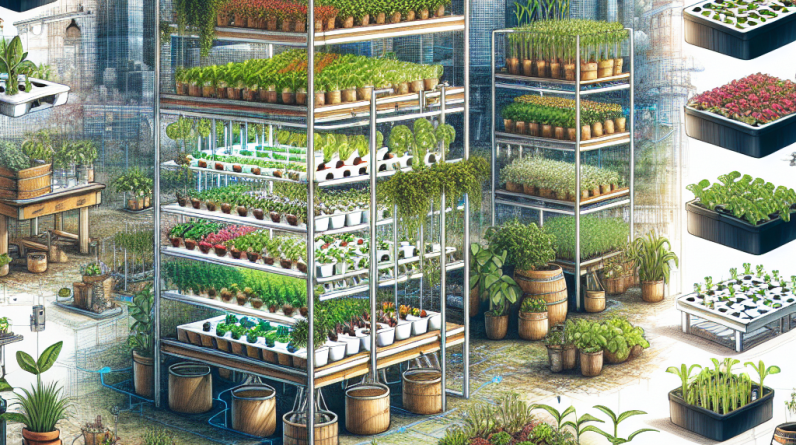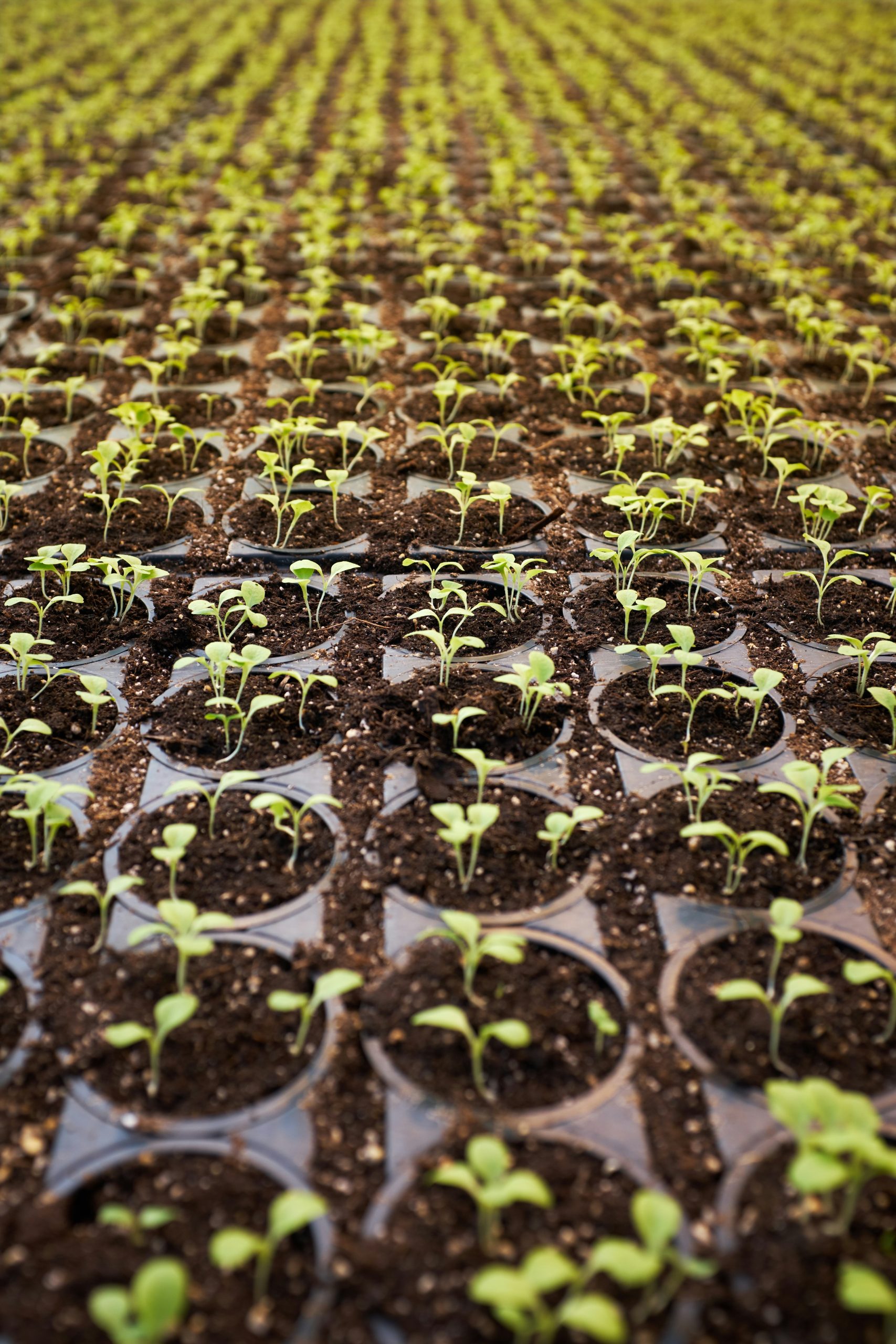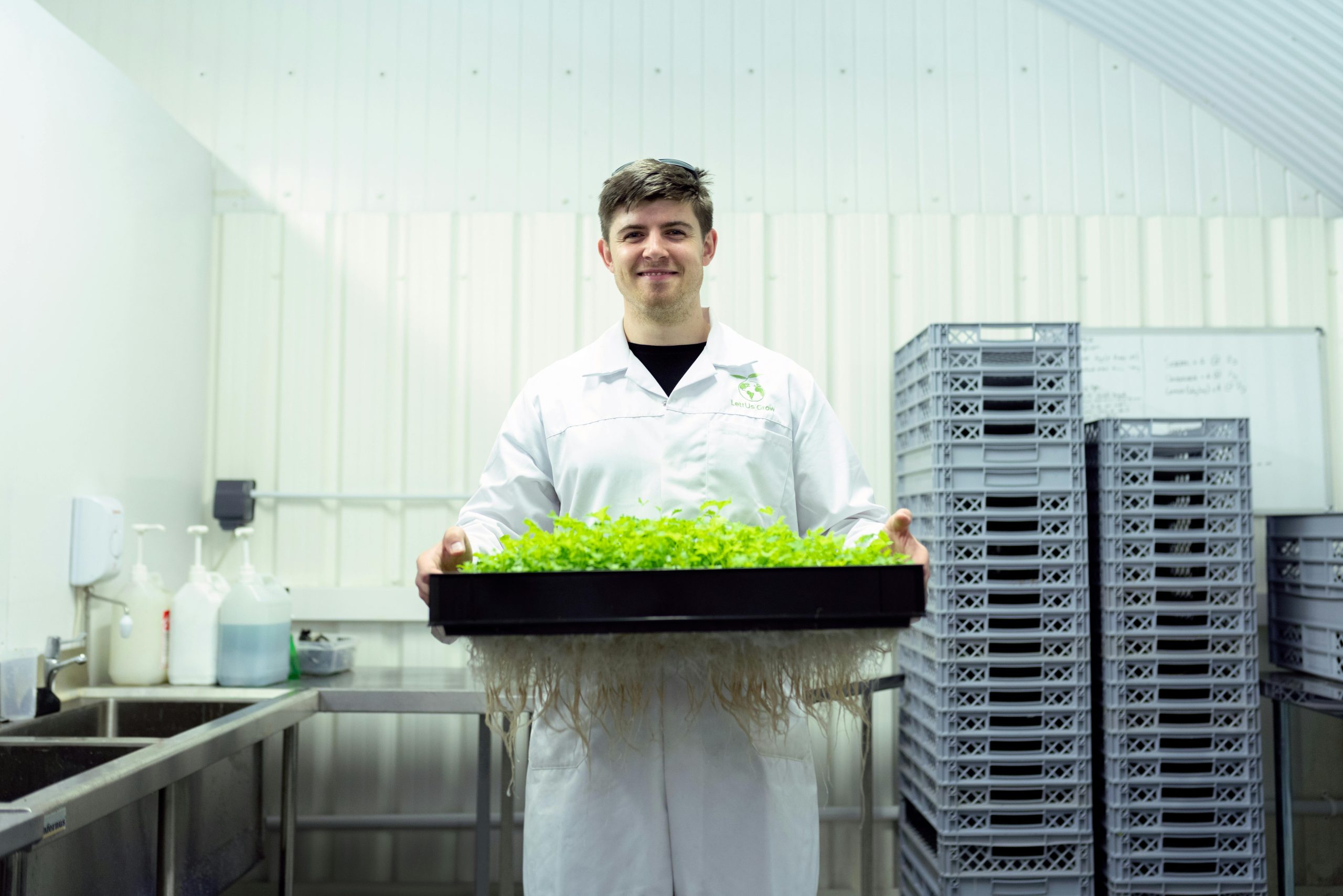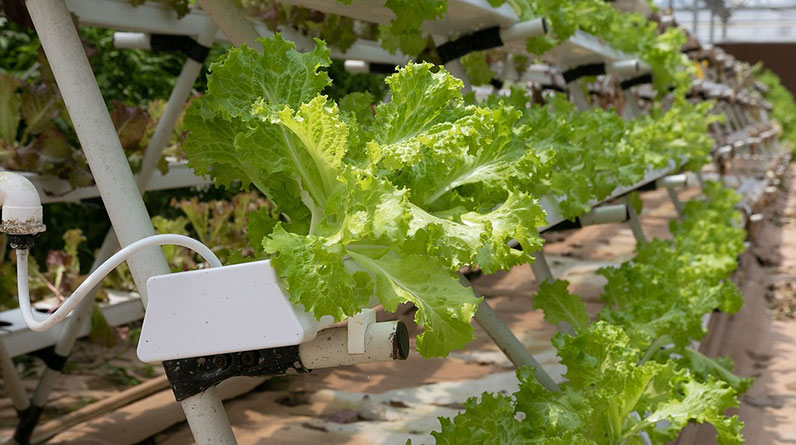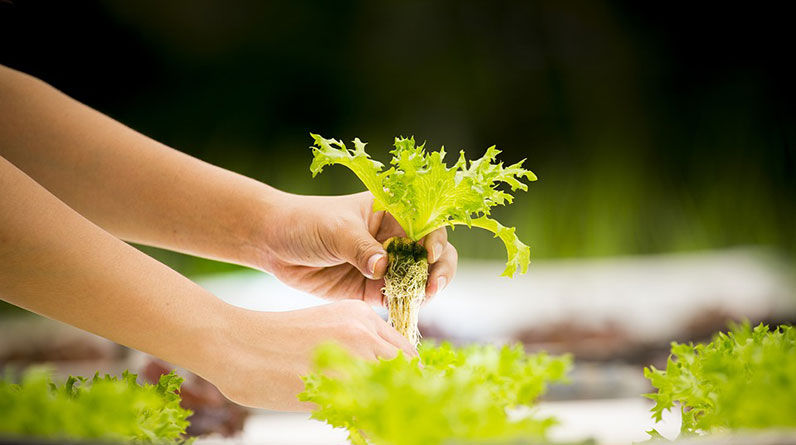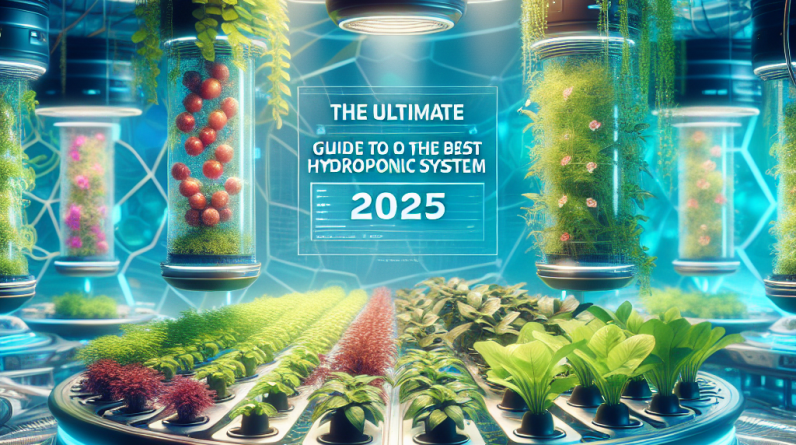
Table of Contents
- 1. Choose the Right Indoor Water Gardening System
- 2. Optimize Light for Your Water Garden
- 3. Maintain Water Quality and Levels
- 4. Select Appropriate Plants for Your System
- 5. Properly Fertilize and Nutrify Your Plants
- 6. Control Pests and Disease
- 7. Monitor and Adjust System Temperature and Humidity
- 8. Use Smart Technology for Automation
- 9. Regular Maintenance and Troubleshooting
- 10. Stay Up-to-Date With Trends and Innovations in 2025
1. Choose the Right Indoor Water Gardening System
Select a System Suited to Your Space and Skill Level
When starting your journey with an indoor water gardening system, the first step is selecting the right setup tailored to your space and experience. Whether itâs a compact countertop hydroponic setup or a larger, self-contained aquarium-style system, there are options suitable for beginners and advanced growers alike. In 2025, smart water gardening kits that integrate IoT technology are increasingly popular, making system management more straightforward than ever.
Consider factors like available space, budget, and plant types when choosing your system. For example, a simple water-plant container with a built-in pump might suffice for herbs, while a more complex aquaponic system might be needed for edible greens like lettuce or herbs. Investing in the right system ensures better plant health, less frustration, and a more enjoyable gardening experience.
Assess Your Lighting and Power Needs
Power consumption and lighting are critical in selecting your indoor water gardening system. In 2025, energy-efficient grow lights like LED systems have become standard, helping minimize electricity bills while providing optimal light spectrum for plant growth. Match your lighting setup to your chosen system to ensure healthy development and prevent issues like algae overgrowth or poor plant health.
Furthermore, systems with automatic lighting timers can help create consistent growth cycles, even during busy schedules. Proper assessment of your lighting needs reduces hassle and ensures that your plants thrive all year round.
2. Optimize Light for Your Water Garden
Understanding Light Requirements for Aquatic and Terrestrial Plants
Light is fundamental to the success of an indoor water gardening system in 2025. Different plants have varying light needs; some thrive in bright, direct light, while others prefer diffused or low light conditions. For aquatic plants, such as floating lilies or submerged greenery, understanding their specific needs helps in selecting the right lighting setup.
Incorporate full-spectrum LED grow lights that replicate natural sunlight, which is vital in maintaining plant health indoors. Doing so not only promotes lush foliage but also prevents maladies like etiolationâwhere plants become leggy and weak due to insufficient light.
Adjust Light Placement and Duration
Proper placement of your indoor water gardening system’s lights ensures uniform light exposure. Position lights just above the plants to prevent stretching or uneven growth. In 2025, programmable timers allow you to simulate natural daylight cyclesâaround 12-16 hours of light per day depending on plant type.
Consistency is key. Regularly checking and adjusting the light intensity and duration can drastically improve plant vitality. Consider using light meters to measure light intensity and fine-tune your setup for optimal results.
3. Maintain Water Quality and Levels
Regular Water Testing and Filtration
Maintaining pristine water quality is crucial for the success of any indoor water gardening system. In 2025, smart sensors that continuously monitor pH, nitrate, phosphate, and dissolved oxygen levels are readily available, making it easier to keep water conditions optimal.
Implementing a reliable filtration system removes toxins, debris, and algae-promoting nutrients that can harm your plants. A combination of mechanical and biological filtration ensures a balanced environment, leading to healthier growth and vibrant greenery.
Keep Water Levels Consistent
Fluctuating water levels can stress your plants and disrupt nutrient absorption. Regularly check and top off water in your indoor water gardening system to compensate for evaporation, especially during dryer months of 2025.
Using automated water level controllers can simplify this task, providing peace of mind and ensuring your plants always have the ideal water availability. Precision in water maintenance ultimately results in a thriving indoor garden setting.
4. Select Appropriate Plants for Your System
Choosing Plants Suited for Indoor Water Gardening
In 2025, selecting plants compatible with your indoor water gardening system is essential. Popular choices include water lettuce, mint, basil, and dwarf varieties of aquatic plants. These species adapt well to water-based environments and grow rapidly, ensuring a lush display.
Likewise, consider edibles if you plan to use your system for food productionâherbs like cilantro or parsley thrive in hydroponic setups. Remember, the health and yield of your plants depend on choosing the right species for your specific environment.
Understanding Growth Habits and Care Needs
Research each plantâs growth habitsâsome grow tall and may need support, while others spread quickly. In 2025, plant-specific LED lighting and tailored fertilization help optimize growth. Proper care ensures your indoor water gardening system remains vibrant and productive.
Use plant-specific guides and resources to understand watering frequency, fertilization schedules, and pruning techniques. This knowledge keeps your indoor garden healthy and beautiful year-round.
5. Properly Fertilize and Nutrify Your Plants
Choosing the Right Fertilizers
Effective fertilization is vital to supplement nutrients in an indoor water gardening system. Rich, water-soluble fertilizers formulated for aquatic plants or hydroponic systems are best suited for 2025. These products provide essential macro- and micronutrients for optimal growth.
Incorporate fertilizers based on your plant types and growth stages. For instance, leafy greens need higher nitrogen levels, while flowering aquatic plants require potassium and phosphorus.
Application Techniques and Frequency
Applying fertilizers correctly involves following manufacturer guidelines and observing your plants. Over-fertilizing can lead to algae issues or root burnout, so moderation is key. Using a feeding scheduleâonce every 1-2 weeksâhelps maintain consistent nutrient levels.
Monitoring plant health indicators like leaf color and growth rate guides your fertilization needs. In 2025, automated fertilization systems are gaining popularity, providing precise nutrient delivery without manual intervention.
6. Control Pests and Disease
Preventive Measures and Cleanliness
Proactive pest and disease management is essential for sustainable indoor water gardening. Regularly cleaning water containers, filters, and system components prevents the buildup of harmful pathogens and pests like aphids or fungus gnats.
In 2025, introducing beneficial microorganisms or bio-control agents can naturally suppress pests, reducing reliance on chemical treatments. Maintaining proper water cleanliness and ensuring adequate circulation prevents stagnation, discouraging pest habitats.
Early Detection and Treatment
Early identification of pest infestations or disease signsâsuch as discolored leaves or slowed growthâis critical. Invest in magnifying tools or smartphone apps that help you detect issues promptly. Quick response with organic or recommended chemical treatments preserves your indoor water gardenâs health.
Creating a quarantine zone for new plants before introducing them to your main system also helps prevent pathogen spread. Regular inspection and maintenance are your best defenses in 2025 for a pest-free indoor water gardening system.
7. Monitor and Adjust System Temperature and Humidity
Maintaining Optimal Temperature
Most aquatic and semi-aquatic plants flourish in temperatures between 65°F and 75°F (18°C – 24°C). In 2025, using smart thermostats integrated with your indoor water gardening system allows precise control, especially in variable climates or during winter months.
Avoid temperature fluctuations that can stress plants or promote pest growth. Consistent temperature within the optimal range encourages healthy root development and vigorous growth.
Managing Humidity Levels
Indoor humidity significantly impacts water gardening success. Most systems thrive in 50-70% humidity, preventing issues like mold or plant dehydration. Using humidifiers or dehumidifiers with your setup helps maintain ideal conditions.
In 2025, humidity sensors connected to your system can automatically adjust environmental controls, ensuring the right moisture levels are sustained for your plantsâ wellbeing.
8. Use Smart Technology for Automation
Integrating IoT Devices and Apps
Smart technology is transforming indoor water gardening, making automation more accessible. In 2025, IoT-enabled devices can monitor water quality, light, temperature, and humidity, providing real-time alerts and automation options via smartphone apps.
Examples include automated watering systems, remote system control, and nutrient dosing controllers. These innovations enable even busy homeowners to maintain ideal conditions effortlessly.
Creating a Fully Automated System
By combining sensors, timers, and controllers, you can create a fully automated indoor water gardening system that self-regulates. This reduces human error, conserves resources, and promotes consistent plant health.
In 2025, numerous options existâfrom DIY kits to professional-grade setupsâthat leverage smart technology to make indoor gardening more accessible and successful than ever before.
9. Regular Maintenance and Troubleshooting
Establishing a Maintenance Routine
Regular maintenance is the backbone of a thriving indoor water gardening system. Schedule weekly checks for water clarity, system functionality, and plant health. Basic tasks include cleaning filters, checking water levels, and removing debris.
In 2025, using maintenance apps or schedules can streamline your routine, providing reminders and tips based on your systemâs data. Consistent care prevents problems before they escalate, saving time and resources.
Troubleshooting Common Issues
Common issues include algae overgrowth, algae, slow plant growth, or system blockages. Diagnosing these problems promptly requires understanding the signs and having a troubleshooting plan. For example, excessive algae may indicate too much light or nutrients, which can be managed with partial water changes or light adjustments.
Investing in quality equipment and staying informed through online communities or expert advice can help you troubleshoot effectively and keep your indoor water gardening system thriving.
10. Stay Up-to-Date With Trends and Innovations in 2025
Leveraging New Technologies and Techniques
Indoor water gardening is continually evolving, especially in 2025. Staying informed about new systems, lighting options, automation, and sustainable practices can significantly enhance your success. Subscribe to industry newsletters, join online forums, or participate in workshops to stay ahead.
Research eco-friendly and energy-efficient solutions, such as solar-powered pump systems or biodegradable growing mediums, to create a more sustainable indoor garden. Integrating the latest trends ensures that your indoor water gardening system remains efficient, productive, and visually appealing.
Adapting to Emerging Market Solutions
In 2025, emerging market solutions include modular systems, customizable setups, and AI-driven management tools. These innovations make it easier than ever to design an indoor water gardening system tailored to your needs, space, and goals.
Experimenting with new products and techniques can boost your confidence and results. Keep an eye on industry updates and reviews, and donât hesitate to try new approaches to optimize your indoor garden success.
Conclusion
Creating a thriving indoor water gardening system in 2025 is an achievable and rewarding goal when equipped with the right knowledge and tools. From choosing the optimal system and lighting to maintaining water quality and leveraging smart technology, each tip plays a vital role in your success. By following these 10 effective indoor water gardening system tips, you’ll ensure a lush, healthy, and sustainable indoor garden that brings beauty and freshness into your home all year round. Remember, continuous learning and adaptation are key â stay curious and proactive in your approach!
Frequently Asked Questions
1. What is an indoor water gardening system?
An indoor water gardening system is a setup designed to grow plants in water, often incorporating aquatic or semi-aquatic plants, hydroponic techniques, and sometimes fish or other aquatic organisms. In 2025, these systems frequently include smart technology for better control and plant health.
2. How often should I change the water in my indoor water gardening system?
Itâs recommended to change or top off your water weekly to prevent toxin buildup and ensure oxygen levels. However, the frequency depends on the size of the system, plant type, and water quality. Monitoring water parameters helps refine this routine.
3. Can I grow vegetables with an indoor water gardening system?
Yes, many vegetables like lettuce, basil, and herbs grow well in indoor water gardening systems. With proper lighting, fertilization, and water management, you can enjoy fresh produce year-round in 2025.
4. What are the best plants for a beginner indoor water gardening system?
Start with hardy plants like pothos, water lettuce, mint, or basil. These plants are forgiving and adapt well to indoor water environments, making them ideal for beginners.
5. How do I prevent pests in my indoor water gardening system?
Maintain cleanliness, regularly inspect plants, and use natural pest control methods. Avoid overfeeding and keep water conditions optimal to discourage pests and diseases.
Related Content
- How to Start Growing Hydroponic Herbs Indoors
- The Ultimate Guide to ebb and flow hydroponics: 7 Effective Strategies for 2025
- How to Set Up an Automated Hydroponic System for Maximum Growth
- The Impact of Hydroponics on Food Security
- The Ultimate Guide to Growing with Hydroponics in 2025: 7 Effective Strategies for Success


